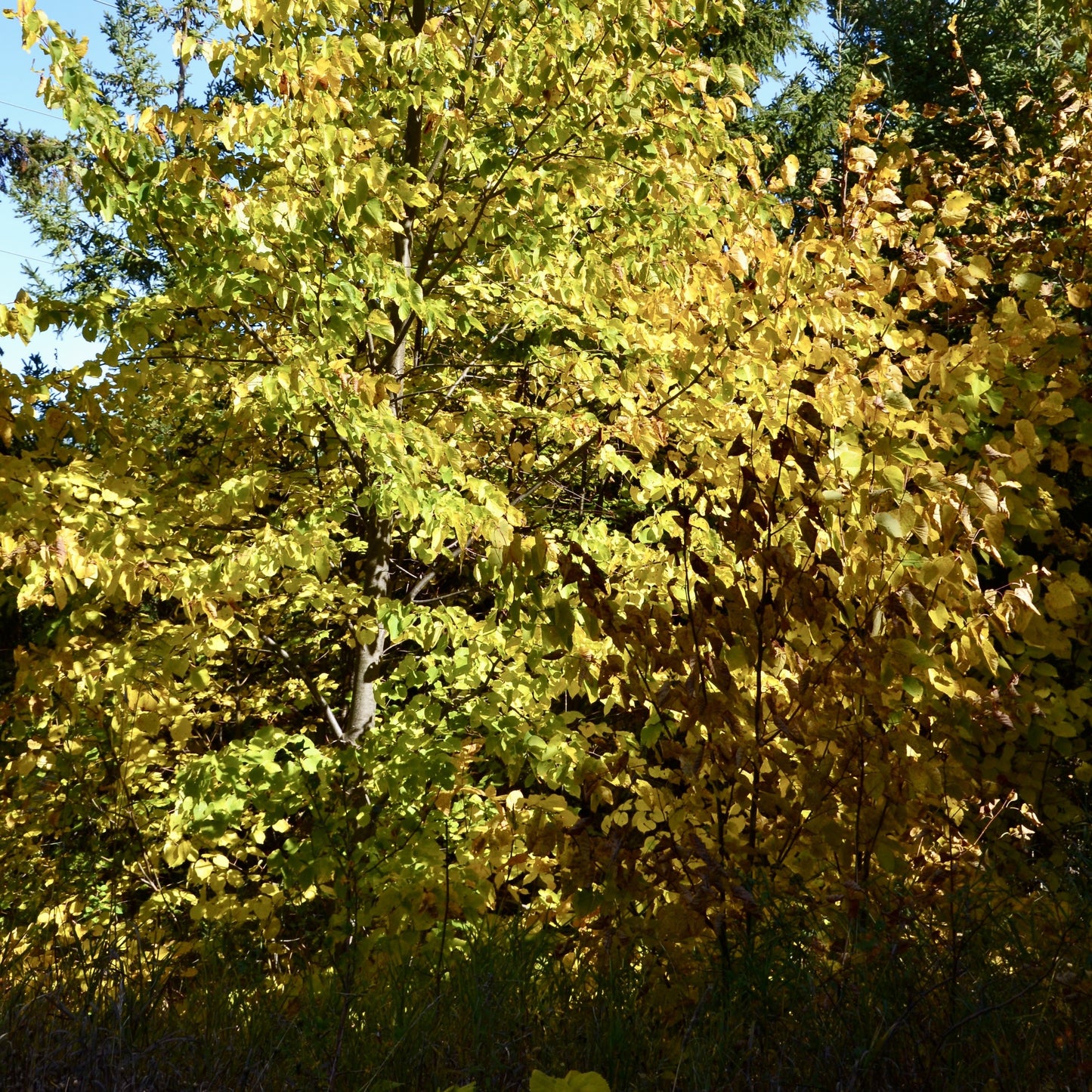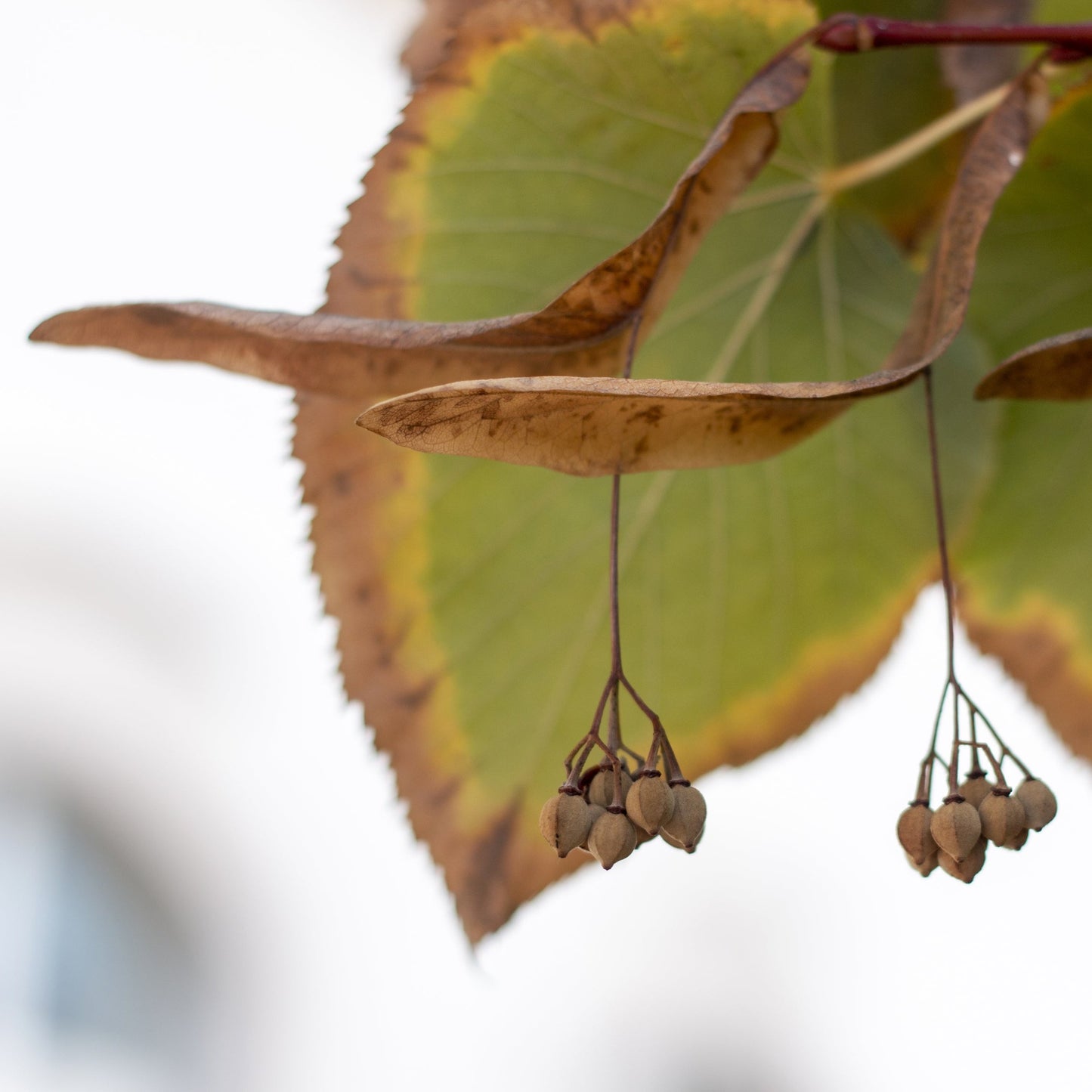Limited Quantities - Reserve Now For Fall
American Basswood Tree
American Basswood Tree
Couldn't load pickup availability
Tilia americana
The American Basswood Tree is a stately, fast-growing deciduous tree prized for its lush green foliage, fragrant yellow flowers, and excellent shade coverage. With its resistance to urban pollution, adaptability to various soil types, and ability to support pollinators, this long-lived native tree is an outstanding choice for parks, large landscapes, and street plantings. The sweetly scented summer blooms attract bees, making it a top source for high-quality honey production.
American Basswood Tree
| Attribute | Details |
|---|---|
| Variety | Rooted |
| Botanical Name | Tilia americana |
| Common Names | American Basswood, Linden Tree, Bee Tree |
| Mature Height | 50-80 feet |
| Mature Width | 30-50 feet |
| Growth Rate | Fast (1.5-3 feet per year) |
| Lifespan | 100-150 years |
| USDA Hardiness Zones | 3-8 |
| Sun Preference | Full sun to partial shade |
| Soil Type | Well-drained, loamy, sandy, or clay soils |
| Soil pH | Slightly acidic to neutral (5.5-7.5) |
| Water Needs | Moderate; prefers moist, well-drained soil but tolerates drought once established |
| Flowering Season | Late spring to early summer |
| Flower Color | Pale yellow, fragrant clusters |
| Fall Foliage | Yellow |
| Wildlife Attraction | Bees, butterflies, birds, small mammals |
| Growth Habit | Broad, rounded canopy with a strong central trunk |
| Self-Pollinating? | Yes |
| Landscape Uses | Shade tree, street tree, pollinator gardens, ornamental planting, windbreak |
| Maintenance Level | Low to moderate |
Environmental Benefits
🐝 Pollinator Haven – Produces nectar-rich flowers, making it one of the best trees for attracting bees and supporting honey production.
🌳 Air Purification & Urban Resilience – Absorbs carbon dioxide and pollutants, helping improve air quality and adapt to urban environments.
💧 Erosion Control & Soil Stability – Deep root system prevents soil erosion, making it ideal for hillsides and flood-prone areas.
🌞 Excellent Shade Provider – Forms a dense, broad canopy, reducing temperatures in parks, residential areas, and urban landscapes.
Pros & Cons
| Pros | Cons |
|---|---|
| Fast-growing and provides excellent shade | Large size requires ample space for full growth |
| Highly attractive to pollinators and wildlife | Seeds and flowers can create litter in high-traffic areas |
| Resistant to pollution and urban stressors | Susceptible to Japanese beetles and aphids |
| Tolerant of different soil conditions | Requires consistent watering in dry conditions for best growth |
| Fragrant yellow flowers add seasonal interest | Soft wood can be prone to breakage in storms |
Planting & Care Guide
- Spacing: Plant 30-50 feet apart for full canopy development
- Soaking: Soak roots in water for 6-12 hours before planting
- Planting Depth: Dig a hole twice the width of the root system, ensuring roots are level with the soil surface
- Mulching: Apply a 2-3 inch layer of mulch to retain moisture and suppress weeds
- Pruning: Prune in late winter to early spring to remove weak or damaged branches
- Fertilization: Use a balanced slow-release fertilizer in early spring to support healthy growth
- Watering: Water regularly during the first year, then reduce as the tree matures
The American Basswood Tree is a stunning, fast-growing native tree that provides shade, pollinator support, and ornamental beauty. Whether planted for honey production, urban greening, or as a landscape centerpiece, this resilient and low-maintenance tree is a valuable addition to any outdoor space.
Share




